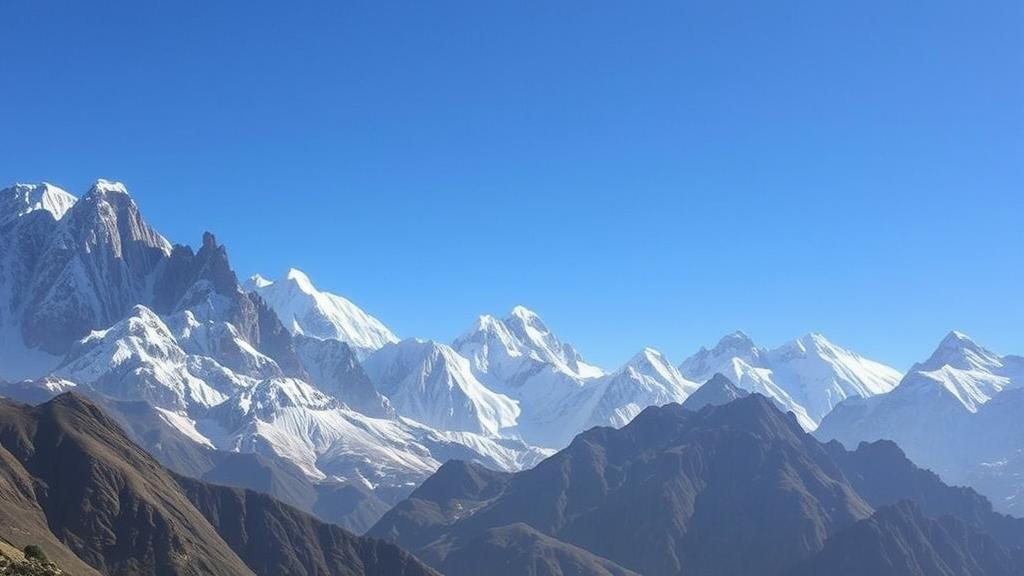Searching for the “breathing mountains” in the Himalayas, described in cryptid tales of giants waking from slumber.
Searching for the Breathing Mountains in the Himalayas
The Himalayas have long been a source of intrigue and mystery, capturing the imagination of explorers, scientists, and adventurers alike. Among the most captivating tales are those describing the so-called breathing mountains, where legends speak of giants waking from their slumber. This article delves into the origins of these tales, the geography of the region, and the real-world implications of such myths.
The Legend of the Breathing Mountains
Stories of the Himalayas being home to colossal beings date back centuries. In various cultures, particularly among the local Tibetan and Nepalese communities, the mountains are often personified as living entities that breathe in and out. This phenomenon is said to give rise to subtle earthquakes, often attributed to the stirrings of these ancient giants. The exact origins of these tales remain murky, but they illustrate how nature has been intertwined with myth in human history.
Geological Significance
The Himalayas themselves are one of the youngest mountain ranges in the world, formed approximately 50 million years ago from the collision of the Indian and Eurasian tectonic plates. This ongoing geological activity contributes to the shifting landscapes and occasional seismic events in the region. In particular, the tremors felt across the area can sometimes lead locals to believe that the mountains are indeed breathing.
Scientific Perspectives
While the notion of breathing mountains might evoke a sense of wonder, scientific perspectives offer grounded explanations for these phenomena. Seismologists, who study the frequency and mechanisms of earthquakes, have recorded numerous tremors in the Himalayas. For example, the magnitude 7.8 earthquake that struck Nepal in 2015 resulted in widespread devastation, claiming thousands of lives and highlighting the volatile nature of this region.
According to a report by the U.S. Geological Survey, the Himalayas experience about 15,000 earthquakes of varying magnitudes each year, showcasing the geological activity that fuels these legends. This data reveals a stark reality–while the tales may encapsulate poetic beauty, they also remind us of the potential dangers inherent in living near such powerful natural forces.
Cultural Impact and Myths
The myths surrounding the breathing mountains have had a significant cultural impact, influencing art, literature, and religion. Tibetan Buddhism, for instance, reveres the mountains as sacred, viewing them as the abode of deities. Mount Kailash, often referred to as the Axis of the Universe, is a prime example, attracting thousands of pilgrims each year.
- Mount Kailash is thought to represent the cosmic axis that supports the universe.
- The region has a history of sacred pilgrimage routes, heavily embedded in local culture.
The Search for Truth
Modern explorers and environmental scientists have taken an interest in understanding both the reality behind these legends and their implications for local communities. They venture into the heart of the Himalayas, engaging in research and community dialogues. Expeditions often focus on sustainable practices that respect local traditions while allowing scientific inquiry to flourish.
For example, a 2021 project initiated by the University of Nepal aimed to study both the natural and cultural dimensions of the Himalayas. This included collaborations with local guides, who often have insight into the legends that surround the mountains. Such projects not only bridge the gap between science and mythology but also empower local communities to preserve their heritage.
Actionable Takeaways
For those fascinated by the intersection of myth and reality in the Himalayas, consider the following steps:
- Engage with local cultural practices to gain a deeper understanding of the legends.
- Support sustainable tourism initiatives that respect the environment and local traditions.
- Stay informed about ongoing geological research, which can shed light on both natural phenomena and geological hazards.
The tales of the breathing mountains serve as a powerful reminder of humanitys enduring connection with the natural world, blending the line between myth and reality in ways that captivate minds and inspire hearts. As we search for the giants who may linger amidst the snow-capped peaks, we uncover a profound tapestry that intertwines history, culture, and the breathtaking majesty of the Himalayas.



